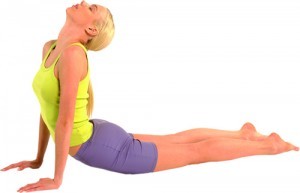3 Tips for (almost) Perfect Lifting Technique
A couple of days ago a friend asked me 'What can I do to tone up? I don't want to injure myself but I need to turn things around.' Here's what I told him. First of all it's important to understand that this would be somebody that I wouldn't be able to coach and monitor the workouts. And this wouldn't be someone that I had worked with in the past that I knew their movement patterns, previous injuries and strength/weaknesses. Instead this was someone that wanted to 'tone up his upper body' (he flexed his biceps and grabbed it with the other hand as he told me this). And since he was highly motivated and wanted some help I gave the quickest answer I ever have regarding training as safely and as effectively as possible. Rule #1 - Maintain a stable head position You've probably heard the expression 'where the head goes the body will follow' and this applies to training. When you train you want to set the head in a neutral position and maintain that throughout your training. Too often we see people trying to crank out extra reps and they throw the head back (when standing) to generate some momentum and squeeze out another rep or two. Not only does this take stress off the working muscles, where you want it to be, it puts stress where you don't, such as on the low back.
[caption id="attachment_4209" align="aligncenter" width="300"] Notice the position of the low back when the head looks up.
***quick drill to test this out...place your hands on your low back and look up at the ceiling...did you feel your low back relax?...now look down at your toes...did you feel your low back tighten up?...keep your head stable and neutral to avoid creating motion through the low back*** Rule #2 - Lock the ribs on the hips When you have a neutral standing posture pay attention to the distance from your bottom ribs to your hips. This distance should not change when you lift. Maintaining this distance ensures you have stability through the lumbar region and allows you transfer force safely and effectively through the extremities. Many people will see this distance increase when they lift. This is especially true of lifts performed in a prone or facedown position. Rule #3 - Minimize elements of effort When you are performing a challenging training session you will notice that certain things change. Your temperature rises, your respirations increase, the tempo of your movements may change and your technique may vary near the end of a difficult set. Collectively these are sometimes referred to as elements of effort. And while we don't need to avoid these at all costs we want to be careful about how often they appear in our training. The reason that the more elements of effort and the more often they occur the greater the chance of injury and the harder it is to recover from a training session. The goal would be to be in the moment during your training sessions. Understand how a movement or exercise should feel as well as how it should not. Know what pulse rates you reach for a certain workout, how long it typically takes you and how hard it should feel. On days when everything is feeling a little harder than normal don't force it. It may your body's of telling you to back off and take a rest day. Because the best training session of your life only moves you a step or two closer to your goal. But over-reaching, over-training or potentially getting injured can set you back much further. Going forward remember to maintain a neutral and stable head position, respect the distance from ribs to hips and minimize the elements of effort. Doing so will ensure that 99% of your training sessions are done with the least amount of risk and the best possible technique. Chris [fb-like]
When you subscribe to the blog, we will send you an e-mail when there are new updates on the site so you wouldn't miss them.

Comments